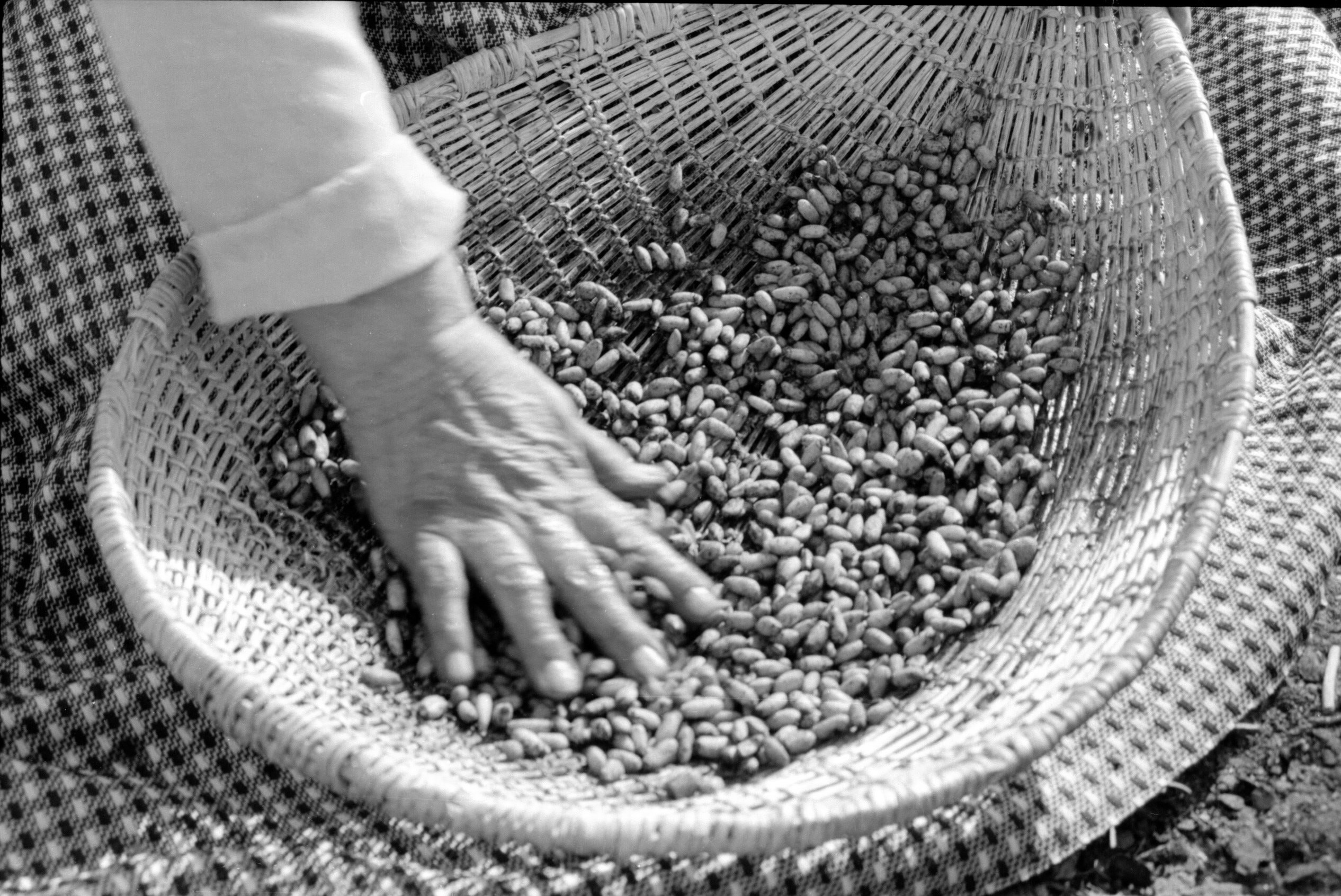
Washoe Basket Designs: Geometric Patterns and Cultural Significance in Sierra Nevada Art
In the rugged heart of the Sierra Nevada, where granite peaks pierce the sky and ancient pines stand sentinel, a profound artistic tradition has flourished for millennia: the basketry of the Washoe people. Far from mere utilitarian objects, Washoe baskets are intricate tapestries of geometric patterns, each stitch a testament to meticulous skill, profound cultural knowledge, and an unwavering connection to the land. These designs, often deceptively simple in their forms, carry layers of meaning, embodying the Washoe worldview, history, and spiritual essence, placing them firmly among the most significant indigenous art forms of North America.
The Washoe, or Wašišiw, are the indigenous people of the Great Basin, whose ancestral lands span the area around Lake Tahoe and the Carson Valley, bridging the high Sierra Nevada and the lower deserts. For these people, basketry was not just a craft but a central pillar of their existence, interwoven with daily life, ceremony, and identity. Women, as the primary weavers, were the custodians of this intricate knowledge, passing down techniques and patterns through generations, much like an oral tradition etched into willow and sedge.
At the core of Washoe basketry’s visual appeal are its striking geometric patterns. These are typically rendered in bold contrasts of light and dark, or vibrant earth tones, achieved by the careful selection and preparation of natural materials. The primary materials include willow (for the foundation rods), and sedge root and bracken fern root (for the sewing strands), often augmented by redbud for its distinctive reddish-brown hues. The process of gathering, peeling, splitting, and drying these plants is itself an art, requiring intimate knowledge of the environment and a deep respect for its offerings.
The patterns themselves are a lexicon of the natural world and abstract thought. Common motifs include zigzags, diamonds, chevrons, stepped designs, crosses, and elaborate variations of squares and triangles. A zigzag might represent a rattlesnake’s movement, a bolt of lightning, or the flow of a river. Diamonds could symbolize stars, eyes, or the four directions. Stepped patterns often evoke mountains, clouds, or the ascent and descent of spirits. While precise interpretations can vary by weaver and family tradition, the underlying connection to the environment is constant. Each pattern is a visual metaphor, a mnemonic device that links the observer to the landscape and the narratives associated with it.
The execution of these designs demands extraordinary precision. Washoe baskets are predominantly made using the coiling technique, where a foundation of willow rods is spiraled upwards, and each new coil is stitched to the one below it using finely split sewing strands. The tightness of the weave, often with stitches so fine they are counted in hundreds per square inch, is a hallmark of Washoe masterworks. This density not only makes the baskets incredibly durable and often watertight but also allows for the crisp, clean definition of the geometric patterns, transforming a functional object into a canvas of astonishing detail.

Beyond their aesthetic brilliance, the cultural significance of Washoe basket designs is profound. These baskets are not merely decorative; they are repositories of Washoe culture, history, and spirituality. They were used for gathering, cooking, storage, and ceremonial purposes, each function dictating specific forms and designs. A finely woven "degikup" – a globular, truncated cone-shaped basket highly prized for its beauty and craftsmanship – might have been a gift for a special occasion, a vessel for sacred objects, or a demonstration of a weaver’s exceptional skill and status.
The act of weaving itself was a spiritual practice. It required patience, focus, and a meditative connection to the materials and the land they came from. The patterns were not simply applied but emerged from the weaver’s hands, guided by generations of inherited knowledge and personal vision. In this sense, each basket is a narrative, a silent story told through the language of form and pattern, reflecting the weaver’s personal journey, her connection to her ancestors, and her understanding of the universe.
The zenith of Washoe basketry is often associated with the legendary weaver Dat So La Lee (Louisa Keyser, c. 1829–1925). Her "degikup" baskets are considered masterpieces of Native American art, renowned for their unparalleled tightness of weave, perfect symmetry, and innovative, complex geometric patterns. Dat So La Lee was instrumental in elevating Washoe basketry from a functional craft to a recognized art form, achieving widespread acclaim and museum acquisition during her lifetime. Her work, characterized by its often bold, dark patterns against a lighter background, sometimes referred to as "feather" or "quail plume" designs, demonstrated an extraordinary command of form and symbolism. She often incorporated intricate steps, crosses, and diamond motifs that spoke to her deep spiritual understanding and connection to Washoe traditions. Her legacy continues to inspire contemporary Washoe weavers, symbolizing the pinnacle of technical skill and artistic expression.
The journey of Washoe basketry has not been without its challenges. The colonization of their lands, the forced assimilation policies, and the disruption of traditional lifestyles severely impacted the transmission of this art form. Access to traditional gathering grounds became restricted, and the time-consuming nature of weaving became difficult to sustain amidst new economic pressures. For a period, the art faced the threat of extinction.
However, the resilience of the Washoe people and their commitment to cultural preservation have ensured that basketry endures. Today, there are dedicated efforts to revitalize and sustain this vital art form. Contemporary Washoe weavers, often taught by elders or through cultural programs, are reclaiming their heritage, learning the ancient techniques, and interpreting traditional patterns with fresh perspectives. Organizations like the Washoe Cultural Resources Department and various tribal programs actively support weavers, ensuring access to materials, providing workshops, and fostering the intergenerational transfer of knowledge. These efforts are crucial, not just for the survival of an art form, but for the continued cultural identity and spiritual well-being of the Washoe nation.
Washoe basket designs, with their compelling geometric patterns, stand as a powerful testament to the ingenuity, artistic vision, and enduring spirit of the Washoe people. They are more than just beautiful objects; they are living documents of a rich cultural heritage, embodiments of a worldview deeply rooted in the Sierra Nevada landscape. Each basket, whether an ancient artifact in a museum collection or a newly woven creation, bridges past and present, speaking eloquently of a people who have mastered their environment, honored their traditions, and continue to tell their stories through the intricate language of fiber and form. As pieces of Sierra Nevada art, they offer a profound insight into the human spirit’s capacity for beauty, meaning, and resilience, inviting us to look closer, understand deeper, and appreciate the silent narratives woven into every geometric pattern.
